You Are Here: Home » Choosing Table Tennis Equipment » The Blade
How To Choose Your Table Tennis Blade
Top tips to help you choose YOUR ideal table tennis racket.
Part two - what type of table tennis blade should you choose?
By Martin Hughes
Owner and Editor
Part One | Part Two | Part Three | Part Four | Part Five
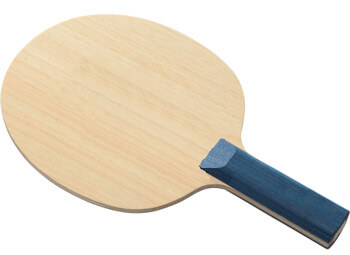
In part one we looked at some basic information about table tennis rackets, and I recommended that you buy a customised racket rather than a ready-made one if you're a serious player, and suggested that you need to consider your style of play before choosing your racket.
So here in part two we'll take a closer look at what you need to know about table tennis blades and look at the different styles of play which will influence your choice of blade.
Many inexperienced players only consider which type of rubbers to use and neglect to consider the blade, but your choice of blade will be just as important as your choice of rubbers.
So let's get started...
TABLE TENNIS EXPERT
REVEALS HIS SECRETS
Click Here For Details
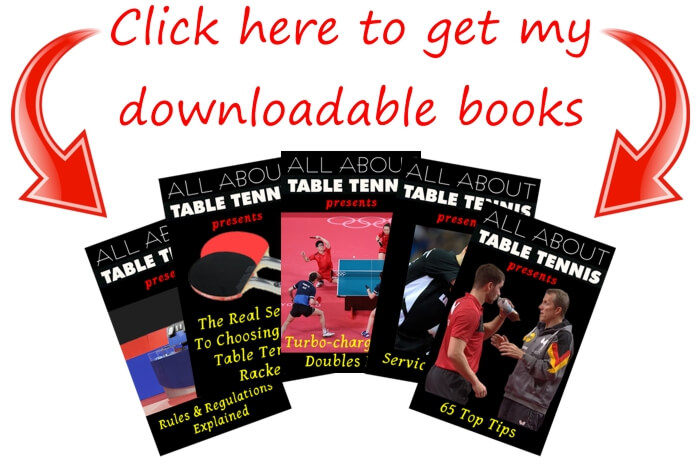
Click here for a large selection of
table tennis equipment at Megaspin *

Click here for a large selection of
table tennis equipment at Bribar *
^ Top of page ^
Firstly, do you know...
What can blades be made of?
Buy Your Blades Here
Butterfly, Stiga, Killerspin & more
Click here to view at

Click here to view at

Click here to view at

Buy Your Blades Here
Butterfly, Stiga, Killerspin & more
Click here to view at

Click here to view at

Click here to view at

The rules of table tennis state that the blade must be made of at least 85% natural wood.
But the rules also allow for small amounts of other materials such as carbon fibre, glass fibre or compressed paper - but these must be less than 7.5% of the total thickness or 0.35mm, whichever is the smaller.
Carbon fibre is generally used to make the blade harder and therefore faster, as well as enabling the blade to have a larger "sweet spot".
However, these blades are much more expensive than regular blades and they're not worth considering until you've progressed to an advanced level.
The majority of blades consist of 3, 5 or 7 layers of wood and the type of wood used in these layers will also be a major contributor to how your blade reacts.
But before we look at those options...
^ Top of page ^
You'll need to decide...
What style of blade should you use?
There are two distinct styles of blades. The first is a...
Penhold Style Blade
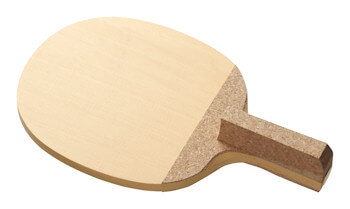
The penhold style blade is for players who use the penhold grip. This type of blade usually has a shorter, thicker handle.
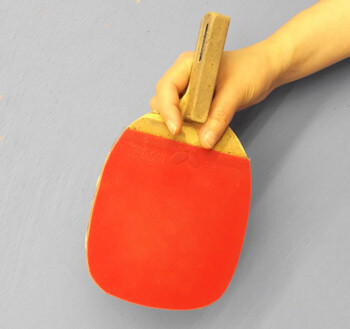
The penhold grip is where the racket handle is held between the thumb and forefinger. This style is used mainly by Asian players.
I wouldn't recommend this type of blade and grip for a beginner or intermediate player because it's more difficult to play a full range of strokes using this grip.
TABLE TENNIS EXPERT
REVEALS HIS SECRETS
Click Here For Details

Click here for a large selection of
table tennis equipment at Megaspin *

Click here for a large selection of
table tennis equipment at Bribar *
I recommend a...
Western Style Blade

The western style blade is for players who use the western grip (also known as the shakehands grip because of its similarity to shaking hands with another person).
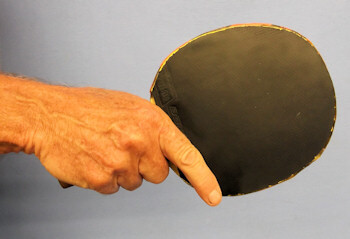
The racket handle is held in the palm of your hand so that the start of the racket head fits snugly into the "V" shape formed by your thumb and first finger.
This is the grip I would recommend for the vast majority of players.
Here's a video I found posted on YouTube which shows how Butterfly blades and rubbers are made in Japan...
Here's a video I found posted on YouTube which shows how Butterfly blades and rubbers are made in Japan...
^ Top of page ^
So, having decided on a western style blade, we now need to consider...
What shape of handle do you prefer?
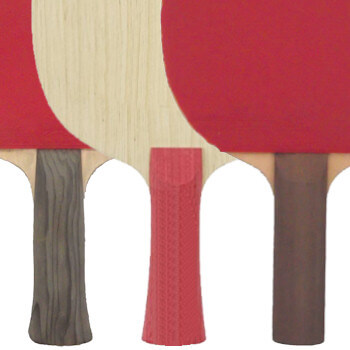
![]()
The choice of handle shape comes down to personal preference, with generally a choice of Anatomic, Flared or Straight.
I prefer the Anatomic shape, but you should use whatever feels most comfortable for you.
If you haven't been playing long enough to be able to make a choice, try asking other players if they've got any old table tennis rackets they could let you try out or buy.
However, you don't need to be too concerned about this, because your preference will evolve over time.
It's also worth noting that you can add an overgrip to the handle, or modify it however you want.
There are no rules about the shape of the handle or the grip, so you can customise it to your own preferences.
^ Top of page ^
So, having decided on a western style blade, and a handle shape, you'll need to consider your final option...
What type of blade should you choose?
Buy Your Blades Here
Butterfly, Stiga, Killerspin & more
Click here to view at

Click here to view at

Click here to view at

Buy Your Blades Here
Butterfly, Stiga, Killerspin & more
Click here to view at

Click here to view at

Click here to view at

Your style of play will help you to determine which blade to choose because you should use a blade which will complement your style. This means choosing a blade with the right combination of wood layers.
Fortunately, all the table tennis equipment suppliers categorise their blades, so you just need to choose a blade from the correct category and you can be confident that it'll be right for you.
There's no need to be concerned with all the subtle differences between blades - just choose one from the correct category.
After all, it's worth remembering that blades are made from wood and therefore every blade will be slightly different, because no two pieces of wood will be exactly the same.
It's also worth noting that blades vary slightly in weight - generally between 75-95 grams. But unless you're an experienced player, you don't need to be too concerned about this. Your preference will evolve over time.
Generally, a defensive player would choose a lighter racket, whilst an allrounder would choose a medium weight racket, and an offensive player would choose a heavier racket to help generate extra power in their shots.
^ Top of page ^
So, what blade category should you choose?...
1. All-round / counter-attacking style
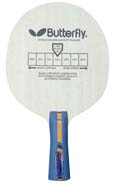
If you're just starting to play table tennis, or you've developed an all-round, counter-attacking style of play, look for a blade that is categorised as Allround.
These blades will consist of hard inner plys of wood, with softer outer plys.
It'll be a medium speed blade and it'll help you to control the ball.
I recommend a...
Butterfly "Timo Boll Control" blade.
You can buy this blade from Megaspin here *
The vast majority of players should choose a blade (and rubbers) in this category.
^ Top of page ^
2. Attacking / offensive style
If you're an advanced player and you've developed an attacking style of play, look for a blade that's categorised as attacking or Offensive.
These blades are semi-rigid with harder outer plys of wood which will enable you to generate more power in your shots.
I recommend a...
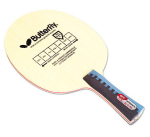
Butterfly "Primorac" blade.
You can buy this blade from Megaspin here *
However, the vast majority of players should choose a blade (and rubbers) from the "Allround" category.
^ Top of page ^
3. Defensive style
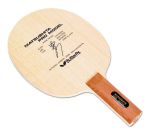
If you're an advanced player and you've developed a defensive style of play, look for a blade that is categorised as Defensive.
These blades will have soft flexible plys of wood which will give you better ball control.
I recommend a...
Joola "Chen Weixing" blade.
You can buy this blade from Megaspin here *
However, the vast majority of players should choose a blade (and rubbers) from the "Allround" category.
When you've chosen your blade, you'll be ready to consider the next stage which we'll look at in part three...
What type of table tennis rubber do you need?
Part One | Part Two | Part Three | Part Four | Part Five
^ Top of page ^
Click here for a large selection of
table tennis equipment at Megaspin *

Click here for a large selection of
table tennis equipment at Bribar *
^ Top of page ^
You Are Here: Home » Choosing Table Tennis Equipment » The Blade

